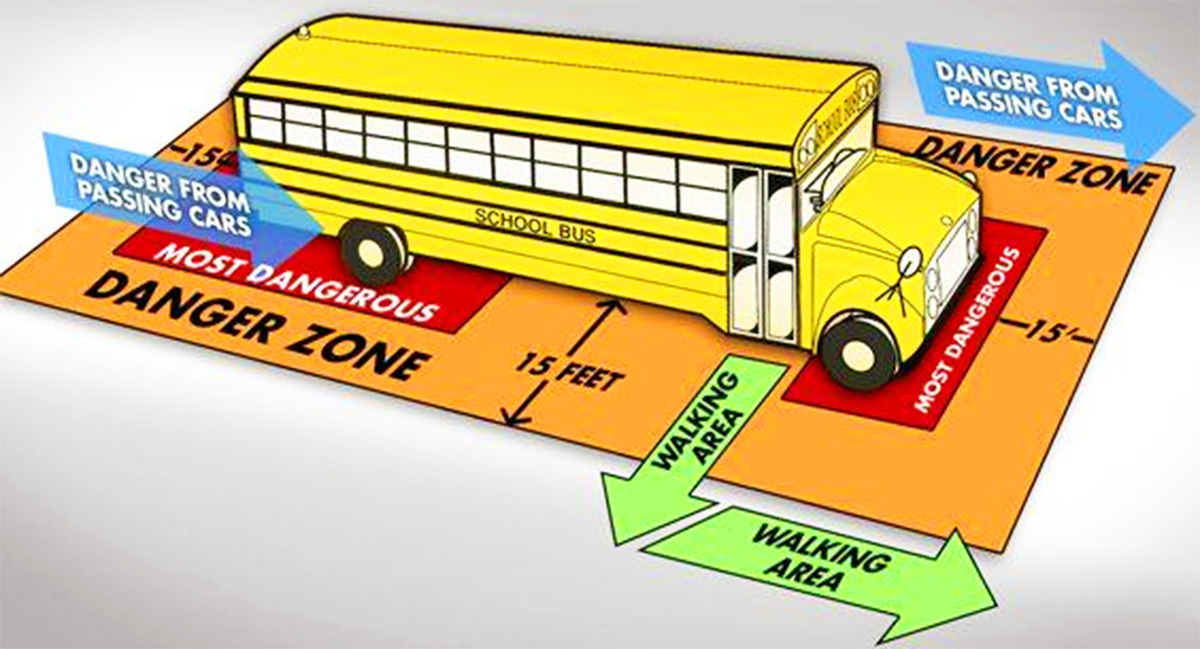Bus Safety
Appropriate Bus Safety is important. It saves children’s lives and protects them from injury. According to the NHTSA, the school bus is the safest vehicle on the road with your child being much safer taking a bus to and from school than traveling by car.
Safety standards for school buses are above and beyond those for regular buses. But, this safety is when children are on the bus. The greatest risk to children occurs when approaching or leaving buses. We have safety tips for children and parents below, plus safety practices for drivers. These tips coming from the NHTSA.
Bus Stop Safety
The greatest risk to your child is not riding a bus, but approaching or leaving one. Before your child goes back to school or starts school for the first time, it’s important for you and your child to know traffic safety rules. Teach your child to follow these practices to make school bus transportation safer.
Safety Starts at the Bus Stop
Your child should arrive at the bus stop at least five minutes before the bus is scheduled to arrive. Visit the bus stop and show your child where to wait for the bus: at least three giant steps (six feet) away from the curb. Remind your child that the bus stop is not a place to run or play.
Get On and Off Safely
When the school bus arrives, your child should wait until the bus comes to a complete stop, the door opens, and the driver says it’s okay before approaching the bus door. Your child should use the handrails to avoid falling.
Use Caution Around the Bus
Your child should never walk behind a school bus. If your child must cross the street in front of the bus, tell him/her to walk on a sidewalk or along the side of the street to a place at least five giant steps (10 feet) in front of the bus before crossing. Your child should also make eye contact with the bus driver before crossing to make sure the driver can see him/her. If your child drops something near the school bus, like a ball or book, the safest thing is for your child to tell the bus driver right away. Your child should not try to pick up the item, because the driver might not be able to see him/her.
Tips for Drivers
Make school bus transportation safer for everyone by following these practices:
- When backing out of a driveway or leaving a garage, watch out for children walking or bicycling to school.
- When driving in neighborhoods with school zones, watch out for young people who may be thinking about getting to school, but may not be thinking of getting there safely.
- Slow down. Watch for children walking in the street, especially if there are no sidewalks in neighborhood.
- Watch for children playing and congregating near bus stops.
- Be alert. Children arriving late for the bus may dart into the street without looking for traffic.
- Learn and obey the school bus laws in your state, as well as the “flashing signal light system” that school bus drivers use to alert motorists of pending actions:
- Yellow flashing lights indicate the bus is preparing to stop to load or unload children. Motorists should slow down and prepare to stop their vehicles.
- Red flashing lights and extended stop arms indicate the bus has stopped and children are getting on or off. Motorists must stop their cars and wait until the red lights stop flashing, the extended stop-arm is withdrawn, and the bus begins moving before they can start driving again.

